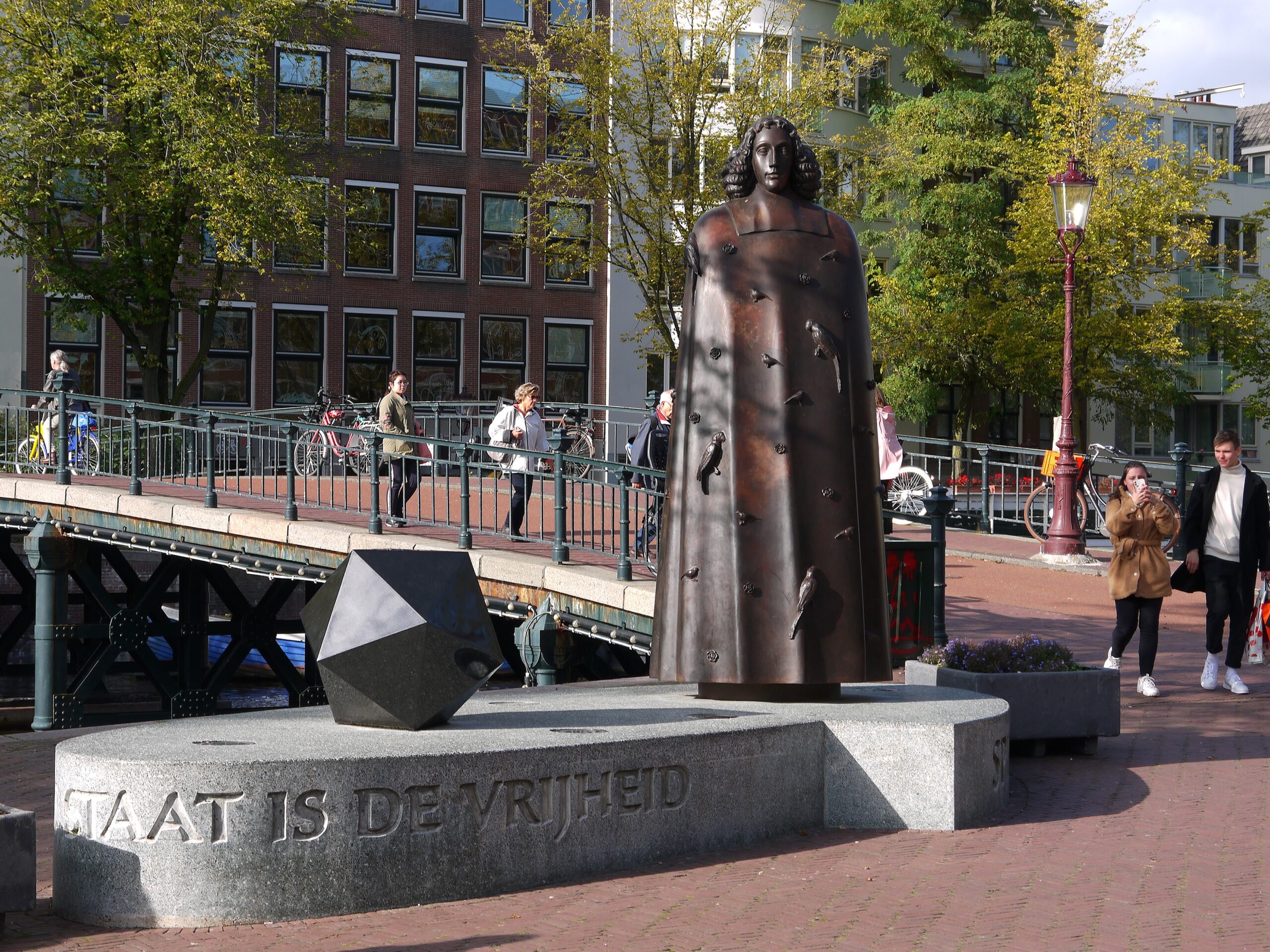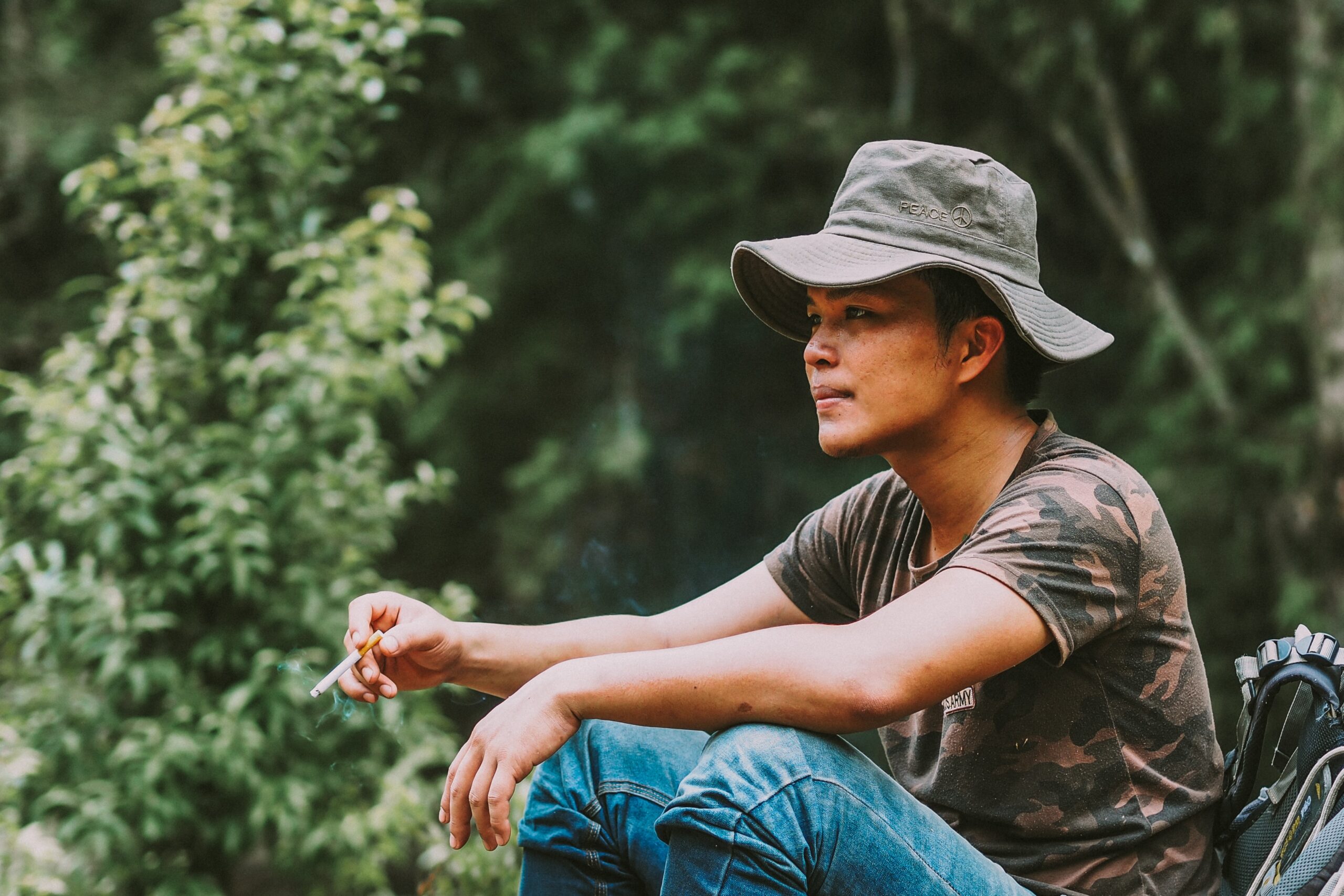When it comes to blending in with your surroundings, traditional camouflage patterns have always been the go-to choice for many. However, have you ever wondered if there are other options out there? In this article, we will explore a variety of alternatives to traditional camouflage patterns that not only offer unique styles but also provide effective means of camouflage. From innovative technologies to creative designs, you’ll soon discover that there’s more to blending in than meets the eye. So, let’s jump right in and explore the exciting world of non-traditional camouflage patterns!

Digital Camouflage
What is digital camouflage?
Digital camouflage is a modern type of camouflage pattern that utilizes computer-generated pixilation to create a more effective disguise. Instead of using traditional blocky shapes and colors, digital camouflage incorporates a series of small square pixels in various shades to create a pattern that blends into the surroundings more seamlessly. The pixelated design breaks up the shape of the wearer and creates a more “dithered” appearance, making it harder for the eye to distinguish and identify the person or object wearing the camouflage.
How is it used?
Digital camouflage is primarily used by military forces around the world. Its design is well-suited for combat situations, providing soldiers with enhanced concealment and decreasing their detectability. The pixelated pattern helps the wearer blend into both natural surroundings and urban environments. In addition to military use, digital camouflage has also found its way into civilian applications such as hunting and outdoor recreation.
Where does it work best?
Digital camouflage works best in environments where there is a mix of natural elements, such as forests or woodlands, as well as man-made structures and patterns found in urban areas. The pixelated design helps to disrupt the silhouette of the wearer, making it difficult for an observer to distinguish between the person and the surrounding environment. This makes digital camouflage particularly effective in situations where the wearer needs to remain hidden or blend in with their surroundings, such as during military operations or surveillance activities.
Multicam Camouflage
History of Multicam
Multicam camouflage was developed by Crye Precision, a company specializing in military apparel and equipment. It was first introduced in 2002 and gained popularity among special operations forces. The goal of Multicam was to create a camouflage pattern that could effectively conceal personnel across a range of environments, including both arid and woodland terrains. By blending various colors and shapes found in different environments, Multicam sought to provide an all-purpose camouflage solution.
How Multicam works?
Multicam uses a combination of small, medium, and large randomly arranged dappled spots to resemble the natural variations found in the environment. The pattern incorporates colors such as green, brown, and tan to blend in with woodland and grassy areas, while also including lighter shades to blend with arid and rocky terrains. By using a mixture of colors and shapes, Multicam creates a visual disruption that makes it difficult for observers to identify the wearer.
Advantages and disadvantages of Multicam
One of the primary advantages of Multicam camouflage is its versatility across different environments. The combination of colors and shapes allows it to blend into a wide range of terrains, making it well-suited for military operations in diverse locations. It provides an effective camouflage option that reduces the risk of detection.
However, one disadvantage of Multicam camouflage is that it may not provide optimal concealment in extreme environments or highly specific terrains. Its design aims to be adaptable, but it may not be as effective as specialized camouflage patterns tailored for specific environments. Additionally, since Multicam is widely used by various military forces, its effectiveness may be diminished if the enemy becomes familiar with the pattern.
Hexagonal Camouflage
How does Hexagonal Camouflage work?
Hexagonal camouflage, also known as honeycomb camouflage, is based on the hexagonal shapes found in nature, such as beehives or the cells of a turtle shell. This pattern utilizes a repeating hexagon design in various colors to create a visually disruptive effect. The hexagonal shapes allow the wearer to blend into environments with organic patterns and irregular shapes, such as dense foliage or rocky landscapes.
Where is it most effective?
Hexagonal camouflage is most effective in environments with intricate patterns and irregular shapes, such as dense forests, jungle areas, or rocky terrains. The repeating hexagon design helps to break up the shape of the wearer and creates an illusion of depth, making it harder for observers to distinguish between the individual and the surroundings. This camouflage pattern can provide excellent concealment in environments where traditional camouflage patterns may not be as effective.
Limitations of Hexagonal Camouflage
While hexagonal camouflage can be highly effective in certain environments, it may not be as versatile as other patterns in different terrains. Its success relies heavily on the presence of organic patterns and irregular shapes found in nature. In environments with more uniform backgrounds or man-made structures, hexagonal camouflage may not blend as seamlessly. Additionally, due to the nature of hexagonal shapes, manufacturing this type of camouflage pattern can be more challenging and costly.
Dazzle Camouflage
Concept and history of Dazzle Camouflage
Dazzle camouflage, also known as razzle-dazzle or disruptive camouflage, is a type of camouflage pattern that was primarily used during World War I and World War II. Its purpose was not to conceal ships or objects but to confuse the enemy by distorting their perception of the target’s speed, direction, and size. Dazzle camouflage was developed based on the principles of visual deception and optical illusions.
Real world applications
Dazzle camouflage was predominantly used on ships during wartime. Its bold and geometric patterns, featuring contrasting colors such as black, white, and various shades of gray, were designed to make it difficult for enemy submarines and aircraft to accurately determine a ship’s direction, speed, and distance. By creating a confusion of angles and shapes, dazzle camouflage aimed to make it harder for the enemy to accurately aim torpedoes or bombs at the target.
Effectiveness of Dazzle Camouflage
The effectiveness of dazzle camouflage is a subject of debate. While it may not have provided complete concealment, it served as a visual disruption and made it challenging for enemy forces to accurately target ships. By distorting the perception of speed and direction, dazzle camouflage played a role in reducing the number of successful attacks on ships. However, as technology advanced, radar and improved target tracking systems made dazzle camouflage less effective, and it is now considered more of a historical curiosity than a practical camouflage option.

Urban Camouflage
Types of urban camouflage
Urban camouflage is designed to blend into urban environments, such as city streets or buildings. There are several types of urban camouflage, each with its own characteristics and effectiveness. Some examples include pixelated urban camouflage, which mimics the appearance of digital camouflage but with colors tailored for urban environments, and concrete or brick pattern camouflage, which imitates the textures and colors of urban structures.
Where is it most used?
Urban camouflage is primarily used by military and law enforcement personnel operating in urban areas. It is particularly effective in dense cities or built-up areas where traditional camouflage patterns may stand out. Urban camouflage helps to conceal personnel and equipment, making them less noticeable to potential threats. It is also utilized by some civilian professionals, such as photographers or wildlife researchers, who need to blend into urban environments while conducting their work.
How effective is urban camouflage?
The effectiveness of urban camouflage depends on various factors, such as the specific pattern used, the lighting conditions, and the observer’s distance and angle. While urban camouflage can help break up the visual outline of a person or object in an urban environment, its effectiveness may vary depending on the specific situation. Factors such as movement, shadows, and the presence of other pedestrians or vehicles can impact the overall effectiveness of urban camouflage. Constant adaptation and innovation are necessary to keep up with the ever-changing urban landscape and the development of new technologies that aid in detection.
Snow Camouflage
Patterns and designs of snow camouflage
Snow camouflage patterns are specifically designed to blend into snowy terrains and provide effective concealment in winter conditions. These patterns typically feature a combination of white, gray, and light shades of blue or green to mimic the colors found in snowy landscapes. The pattern may incorporate shapes such as snowflakes or branches to further break up the silhouette and blend into the surrounding snowy environment.
Usage and effectiveness in snowy terrains
Snow camouflage is primarily used by military forces operating in snowy or winter environments. It is especially effective in mountainous regions or Arctic areas where snow covers the landscape for extended periods. By blending with the snowy backdrop, snow camouflage helps to minimize the visual contrast between the wearer and the environment, making it harder for the enemy to detect and target personnel.
Challenges with snow camouflage
While snow camouflage can offer effective concealment in snowy terrains, there are some challenges associated with its use. One challenge is the need for versatility in pattern designs to suit different types of snow and lighting conditions. The appearance of snow can vary greatly, from fresh, white powder to old, compacted snow or even icy surfaces. Adjusting the pattern to match these different snow conditions is crucial for maintaining optimal camouflage. Additionally, snow camouflage may be less effective in transitional seasons or during periods of snowmelt when the environment is a mix of snow and other elements.

Desert Camouflage
Common desert camouflage patterns
Desert camouflage patterns are specifically designed to blend into arid environments, such as sandy deserts or rocky terrains. Common desert camouflage patterns often feature earthy tones, such as tan, brown, and beige, to mimic the colors found in desert landscapes. These patterns may also include darker shades to create depth and shadow-like effects, helping to break up the silhouette of the wearer in sandy or rocky terrains.
How to use desert camouflage effectively?
To use desert camouflage effectively, it is important to consider the specific environment and lighting conditions. Desert landscapes can vary greatly, from open sandy deserts to rocky canyons or dunes. Choosing a camouflage pattern that matches the predominant colors and textures in the specific desert environment is crucial. Additionally, understanding how light and shadows interact in the desert environment can help optimize the use of desert camouflage to remain concealed.
Problems with desert camouflage
While desert camouflage is effective in blending into arid environments, it has its limitations. Desert landscapes can vary significantly, and a single desert camouflage pattern may not be universally effective in all desert terrains. Additionally, desert camouflage may be less effective in transitional seasons when the environment includes vegetation or during periods of rain when the desert landscape undergoes temporary transformations. Adaptability and flexibility in pattern design and selection are important for maintaining effective camouflage in desert environments.
Marpat Camouflage
What is Marpat Camouflage?
Marpat (Marine Pattern) camouflage is a digital camouflage pattern specifically developed for the United States Marine Corps. It was designed to provide effective concealment in a variety of environments, both woodland and arid. The Marpat pattern combines small pixelated shapes in various shades of green, brown, and tan to create a pattern that blends into natural surroundings.
How does Marpat work?
Marpat camouflage works by disrupting the outline and shape of the wearer, making it harder for observers to detect and identify them. The pixelated design breaks up the solid color areas, creating visual noise that blends in with the natural environment. By incorporating various shades of green, brown, and tan, Marpat provides effective concealment in both woodland and arid terrains, making it a versatile camouflage option for the Marine Corps.
Advantages of using Marpat
One of the key advantages of Marpat camouflage is its adaptability to different environments. The combination of woodland and arid colors allows Marines to blend into a variety of terrains, reducing the need for multiple camouflage patterns. Marpat is also effective at breaking up the shape of the wearer, making it harder for the enemy to accurately identify and target personnel. Additionally, as a digital camouflage pattern, Marpat can be printed with high precision and accuracy, resulting in a consistent and effective camouflage solution.
MTP (Multi Terrain Pattern) Camouflage
Features of MTP Camouflage
MTP (Multi Terrain Pattern) camouflage is a camouflage pattern used by the British Armed Forces. It was introduced in 2010 and aims to provide effective concealment in a wide range of terrains, from woodland to desert environments. The MTP pattern combines a mixture of colors, such as brown, green, and beige, in irregular shapes and sizes to create a camouflage pattern that blends into various landscapes.
Where is MTP Camouflage most effective?
MTP camouflage is most effective in environments with a mix of woodland, grassland, and arid terrains. The combination of colors and shapes in the MTP pattern helps the wearer blend into diverse landscapes, making it well-suited for military operations in multi-terrain environments. This versatility makes MTP an excellent choice for the British Armed Forces, allowing personnel to be effective across different deployment scenarios.
Comparison with traditional camouflage
Compared to traditional camouflage patterns, MTP offers improved versatility and adaptability in multi-terrain environments. Traditional patterns, such as woodland or desert camouflage, may not provide optimal concealment in all terrains encountered during military operations. MTP’s combination of colors and shapes addresses this limitation, making it a more all-purpose camouflage option. The use of irregular shapes also helps to break up the silhouette of the wearer, enhancing overall concealment. However, the increased complexity of the MTP pattern can make it more challenging to manufacture and reproduce consistently.
Crye’s A-TACS (Advanced Tactical Concealment System) Camouflage
Concept of A-TACS camouflage
A-TACS (Advanced Tactical Concealment System) camouflage is a digital camouflage pattern created by Crye Precision. It was developed with the goal of providing effective concealment by mimicking the shapes and colors found in various natural environments. The A-TACS pattern utilizes a combination of small, pixelated shapes in different shades to create a complex and realistic representation of the natural surroundings.
Implementations and applications
A-TACS camouflage is utilized by various military forces and law enforcement agencies around the world. Its design allows it to blend into different environments, including woodland, arid, and urban landscapes. The intricate pixelated pattern helps to break up the visual outline of the wearer, improving concealment and decreasing the chances of detection. A-TACS is often used by special operations personnel, who require a highly effective camouflage solution for a wide range of mission profiles.
Effectiveness of A-TACS
The effectiveness of A-TACS camouflage lies in its detailed representation of natural textures and colors. By incorporating a variety of shapes and shades, A-TACS creates a visually disruptive pattern that confuses the observer and blends into the surroundings. Its adaptability to diverse environments allows it to provide effective concealment in a range of scenarios. However, the complexity of the pattern may make it more challenging to reproduce consistently and manufacture in large quantities. Additionally, as with any camouflage pattern, effectiveness can be influenced by lighting conditions, distance, and the vigilance of the observer.
